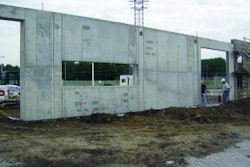The coming year holds much promise for the transportation industry - if Oberstar's six-year, $500 billion highway bill passes, that is. Of course, the highway bill is only one thing on this industry's plate.
Will the American Recovery & Reinvestment Act (ARRA) continue to stimulate transportation construction? What about the Highway Trust Fund's solvency problems? We posed these questions, and a few more, to some industry experts to get their opinions on what 2010 holds for asphalt contractors and producers. Here's what they had to say.
ARRA stimulus projects
AC: How do you see the American Recovery & Reinvestment Act (ARRA) affecting highway contractors and asphalt producers in 2010?
Alison Premo Black, Vice Presidentof Policy and Economist, American Road & Transportation Builders Association (ARTBA): "Funding from ARRA is going to help drive real growth in the highway, street and bridge construction market for 2010," says Black. "ARTBA is forecasting real growth of 8% for 2010."
Jack Basso, Director of Program Finance & Management for the American Association of State Highway and Transportation Officials (AASHTO): "The good news regarding ARRA was that highway projects were ready to go and stimulated the economy," says Basso. "At this point in time, 80% of the highway money is obligated.
"If you think of a bell curve, we're in the bottom half of the bell curve right now," he continues. "In early 2010, we'll be at the peak of the bell curve, which will bode well for the highway construction industry. But by the second half of 2010, we'll be moving down the curve again. By the end of 2010 and early 2011, stimulus projects will start to wane."
Kenneth D. Simonson, Chief Economist for The Associated General Contractors of America (AGC): "Stimulus money flowed quickly for highways, and there's still more to come," says Simonson. "Outside of highway construction, the stimulus funds have been a trickle.
"With the focus on quick, shovel-ready projects, asphalt has gotten a lot of the benefit of ARRA, but this stimulus won't be enough to stop the decline in construction in 2010. Private non-residential construction has dropped the last five months, down 10% from August 2008.
"Highway and street construction is up 3.1% from August '08 to August '09, but with current prices, you could buy more asphalt with the same money in '09 than '08.
"At best, highway construction will be level in 2010," he continues. "Stimulus dollars will be the main source of funding with state budgets getting cut."
Anirban Basu, Chief Economist, Associated Builders and Contractors (ABC): "Next year will be very similar to this year," he says. "The ARRA stimulus funds have had big benefits for highway contractors and asphalt producers. And there will be a positive impact for 2010, and well into 2011. After that, it's not so optimistic.
"State and local governments are in poor shape, and if not for the ARRA funds, they would be in worse shape," he continues. "With these funds, states were able to move forward with projects, and that created a wave of activity.
"After the wave passes," he says, "things will worsen, unless the highway bill passes."
The new highway bill
At press time, the United States Congress had signed a seven-week extension to continue funding for federal surface transportation until December 18.
This is the second extension for surface transportation funding since SAFETEA-LU - the current $286 billion, five-year spending program - expired at the end of September.
The new bill penned by James L. Oberstar (D-Minn.), chairman of the House Transportation and Infrastructure Committee, asks for $500 billion over six years, which could be a boon to asphalt contractors and producers.
AC: Do you see Congress continuing to extend the highway bill? And if a new highway bill should pass in 2010, what effect will that have on the highway industry?
Black, ARTBA: "Federal investment in highway and bridge construction is approximately 45% of the market - so a robust federal aid program is a key component of future growth," she says. "Predictability of federal funding is also important as state and local governments are planning their capital investments.
"The main impact [of the highway bill passing in 2010] will depend on the level of funding in the bill," she continues. "A robust program will help cushion the market in 2011 and provide a foundation for growth over the next five years and go a long way toward meeting the needs of our system. A bill that maintains current spending levels would mean less growth."
Basso, AASHTO: "We want to see a well-funded bill and support Chairman Oberstar's vision of the new highway bill," he says. "Getting this legislation passed is a difficult road to travel, but infrastructure spending is usually popular with constituents - and there's a mid-year election - so it could be passed in 2010."
Simonson, AGC: "Congress is not off to a good start on the highway bill," he says. "It's hard to be optimistic that we'll see an increase in funds in 2010.
"Like with SAFETEA-LU, we'll see the saga repeated with extension after extension," Simonson continues. "I feel funds will stay at current levels for 2010. State budgets will stay at the same levels as well."
Basu, ABC: "If the bill passes and is as generous as it is written, it will improve the outlook for 2011 and beyond," he says. "When Congress starts to focus on the highway bill, there might be a backlash from the electorate, however. They're concerned with government spending, and another big spending bill in 2010 might not sit well with them.
"However, with the unemployment rate at 10.2% and rising, the best way to create jobs is through road resurfacing projects, because those are the infrastructure projects that can move dollars into the economy quickly," he continues.
"If the bill is to pass in 2010, it may be better for it to happen earlier in the year rather than immediately prior to November's mid-term elections, when political influences become more apparent and less predictable," he concludes.
The Highway Trust Fund
With declining vehicle miles traveled and a federal motor fuel tax that has not been raised from its current levels of 18.4 cents per gallon of gasoline and 24.4 cents per gallon of diesel fuel since 1993, the HTF will continue to have solvency problems.
Unfortunately, the Obama Administration has repeatedly stated raising the gas tax is currently not an option. Current user fees generate only enough revenue to finance $35 billion of investments from this year's $53 billion funding level.
AC: What are some ideas/solutions to solving the Highway Trust Fund shortfall?
Basso, AASHTO: "We've had to make two infusions of cash recently to sustain the HTF," he explains. "We'll need another infusion of cash to maintain levels, probably in the May time frame.
"In the short run, increasing the gas tax is probably the fastest, simplest and most efficient way to get more cash into the HTF - however, it's also the most politically ?hot' solution. People don't like to hear that their taxes are being raised.
"There's a lot of research regarding VMT (vehicle miles traveled) and the best way to implement that solution," he continues. "I see VMT as a long-term solution. You'll need to figure out how to get the technology into the cars as well as have a massive back office operation set-up to monitor that technology. VMT is a massive change with long-term care; for a fast solution, we'll need to raise the gas tax."
Simonson, AGC: "More revenue is needed, and for an immediate solution, there needs to be a combination of solutions.
"First, there needs to be an increase in fuel taxes. Then we need to broaden the tax base to include vehicles not powered by traditional fuels," he continues. "A public/private partnership with toll roads would also bring in some additional revenue.
"As far as VMT technology, it's not an immediate solution. It will take a long time to get the technology in place. We need to beef up traditional methods to get money now for the HTF."
Basu, ABC: "The answer is simple," he says. "User taxes. The system needs more revenue, so require users to pay for maintenance through gas taxes, tolls and other fees.
"No one likes higher taxes, but everyone likes to drive on nice roads," he continues. "Make those who use it, pay for it. I think we'll see more of this user fee system in the future, and not just at the federal level, but at the state and local level as well."
The outlook for 2010
AC: In general, what will 2010 look like for asphalt highway contractors and producers?
Black, ARTBA: "2010 will be a good year with real growth of about 8% - we expect highway, street and bridge construction expenditures to reach $90 billion," she says. "This is largely due to a boost in federal spending through ARRA, which will help spur growth as the economy is beginning to recover.
"The ARRA funding is a welcome boost that will help the market in 2010 but will also make the timely passage of a robust federal surface transportation bill even more important," Premo Black continues. "Because the stimulus is a temporary injection of spending, we are looking at a market contraction in 2011, even with a broader economic recovery.
"However, an increase in federal investment will help provide a ?soft landing' in 2011 and could even provide continued growth in 2011," she concludes.
Basso, AASHTO: "ARRA gave this industry a boost in 2009," he says. "If 2009 levels are sustained in 2010, there will be a foundation under contractors. If 2009 levels aren't maintained, you'll start to see numbers sliding backward.
"Another problem is the cash-strapped states cutting budgets," he continues. "Hopefully they'll be able to find the money to continue projects as well."
Simonson, AGC: "In 2010, at best, we'll hang onto current levels," he says. "There was a good deal of stimulus dollars in 2009, so it will be a challenge to stay at those current levels."
Basu, ABC: "Highway construction is the brightest spot in the non-residential construction industry," he says. "Office construction, commercial construction and hotel/motel construction are all mired in recession.
"Keep in mind, what goes around, comes around," he cautions. "Those industries stimuluated by the government are having the best results, and there's been a lot of money spent on highways and roads. But at some point, public financing will shift. We're not there right now, but eventually there will be a time when the government focuses on other things.
"But, 2010 will be a decent year, one way or another," he concludes. "Whether the highway bill passes or not, we'll still have ARRA stimulus funds to keep things moving."



















